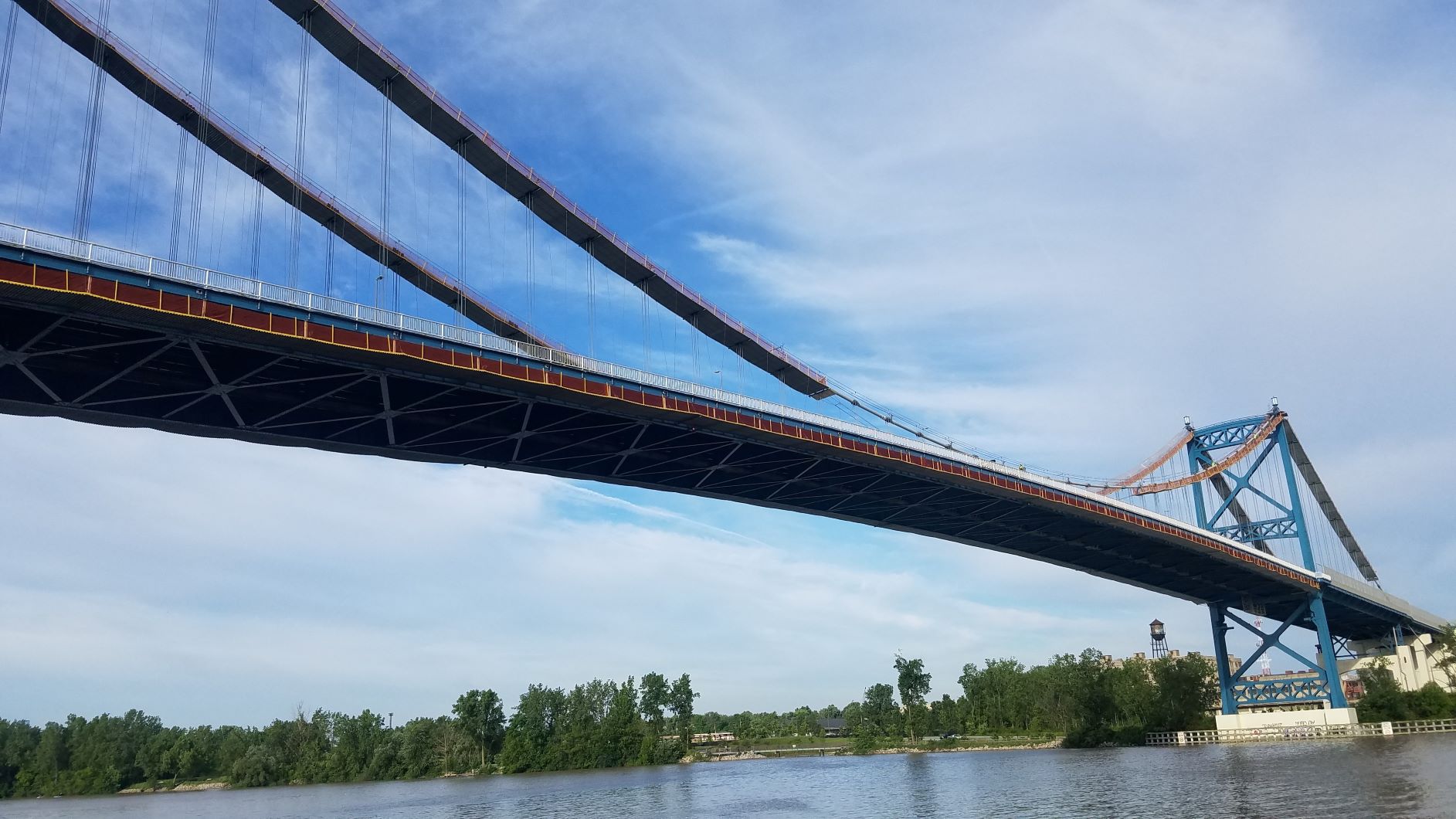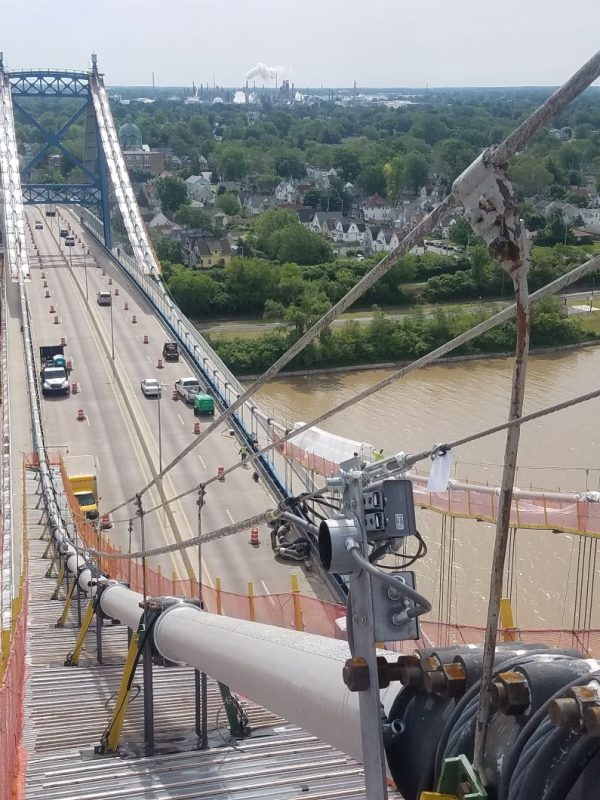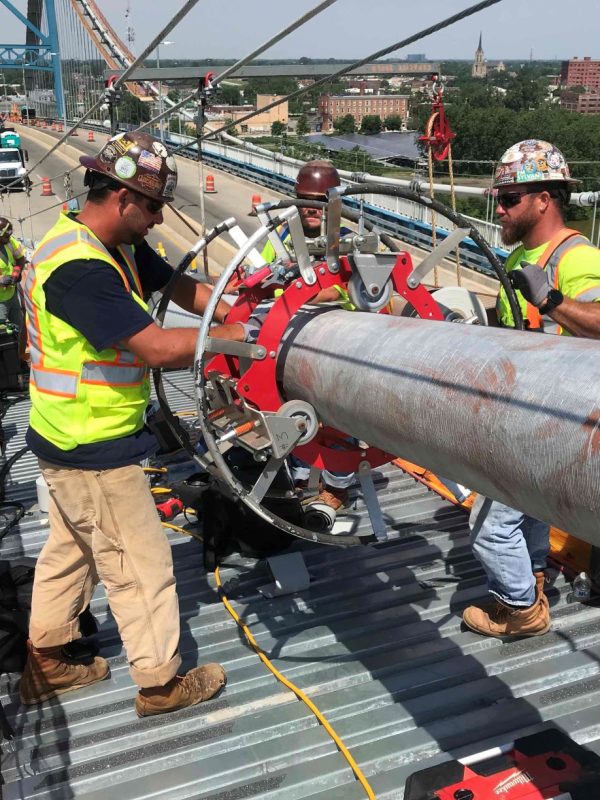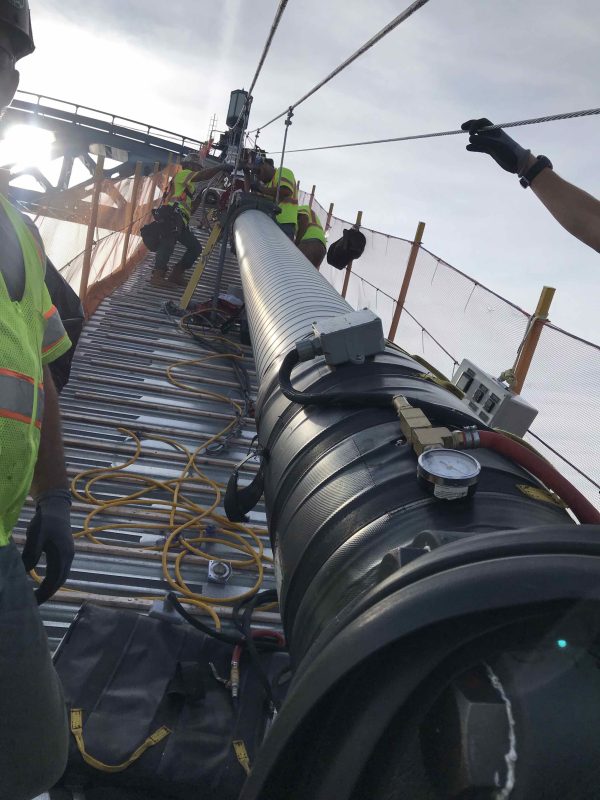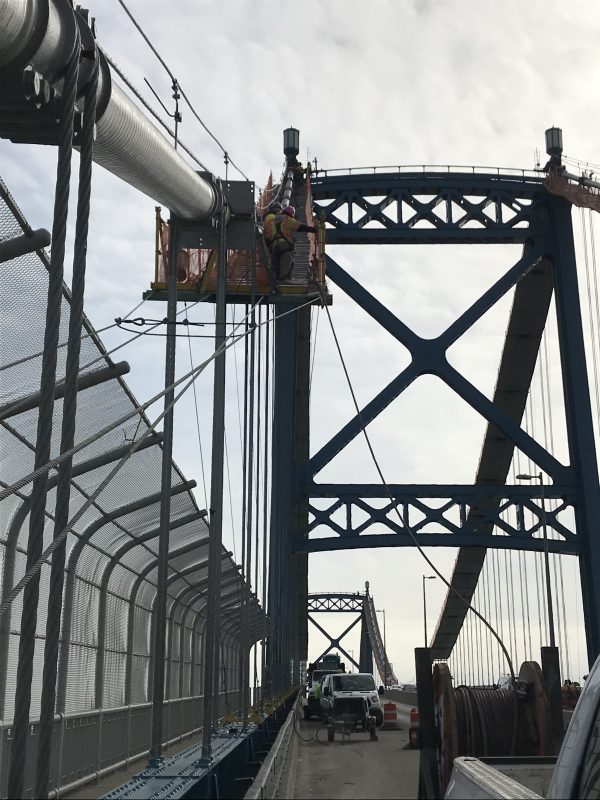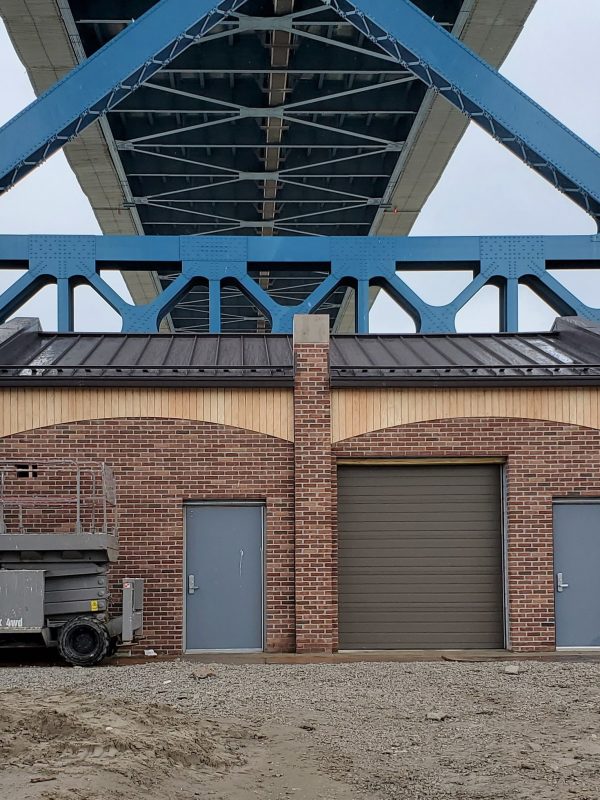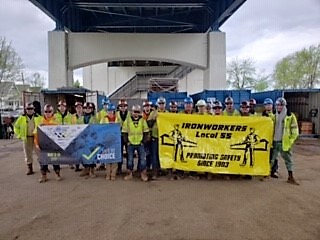The Anthony Wayne Bridge, also known as the High Level Bridge, is a 3,218-foot-long suspension bridge in Toledo, OH spanning the Maumee River. The bridge was constructed in 1931 and connects Clayton Street to Woodville Road carrying Ohio State Routes 2, 51, and 65. Typical of suspension bridges, its main cables were susceptible to corrosion due to trapped moisture. In order to protect the entire length of the main cables and strands in the anchorages, a dehumidification system was selected as the means extend the life of the cables.
In 2018, AB was awarded the Modified Design-Build Operate-Maintain contract for dehumidification of the main cables and anchorages and aesthetic LED lighting. The scope of work includes cable clamp bolt replacement, dynamic lighting installation on the main cables and sidewalk, main cable handrail replacement, cable hold down work, cable access system and cable wrap work, installation of the dehumidification system, construction of a dehumidification building, painting of cable bands, and maintenance of traffic.
AB developed an operations sequence so that all work would be performed in a safe, efficient, and productive manner. Upon project start-up, AB installed a Temporary Cable Access Platform to execute lighting upgrades, cable wrapping, and additional scope items.
While performing structural rehabilitation to the hold down cables, a temporary jacking system was put in place. This system helped to carry the load at four locations while components were replaced or field machined if they were too difficult to replace in their entirety.
To perform cable wrap work on both suspension cables, a catwalk was installed along the entire length of the main cables above the roadway. This work is a temperature-sensitive operation and included the removal of neoprene wrap, repairing broken wires if necessary, cleaning and painting cables, installation of a new neoprene wrap system, and sealing cable bands. A detailed Task Plan was developed listing the means, methods, sequence and hold points for field crews so they understood how to perform the work, avoid damage to wire strands, and perform site-specific testing. Proper cable wrapping is critical to the operation of the dehumidification system.
Installation of the dehumidification system was ongoing throughout the entire project. The system provides protection for the main cables, including the splayed strands in the four anchorages, by encompassing them with an airtight and weather-proof seal allowing a continuous flow of dried air. This method protects the cables by reducing relative humidity and suppresses further cable deterioration from corrosion to extend the life of the cables for as long as practically possible. The system is thoroughly tested and inspected to demonstrate reliability and troubleshoot any issues should they arise during its service live. In addition, AB constructed a new dehumidification plant and garage, installed new electrical systems, data systems, and performed mechanical work and commissioning.
Throughout the project, AB maintained one lane of traffic in each direction and pedestrian traffic was maintained at all times on the bridge. Upon substantial completion in May of 2020, AB will operate, maintain, and monitor the dehumidifciation system for five years.
The Anthony Wayne Bridge will be the first suspension bridge in Ohio to have a cable dehumidifcation system and fourth in the U.S. This system is similar to the Delaware Memorial Bridge Dehumidification and South 10th Street Bridge Dehumidification projects that AB has completed.
Project Details
- Owner: Ohio Department of Transportation
- Location: Toledo, Ohio
- Project Value: $17M
- Completion Date: 2020 (est.)
- Structure Type: Suspension Bridge
- Delivery Model: Modified Design-Build-Operate-Maintain



